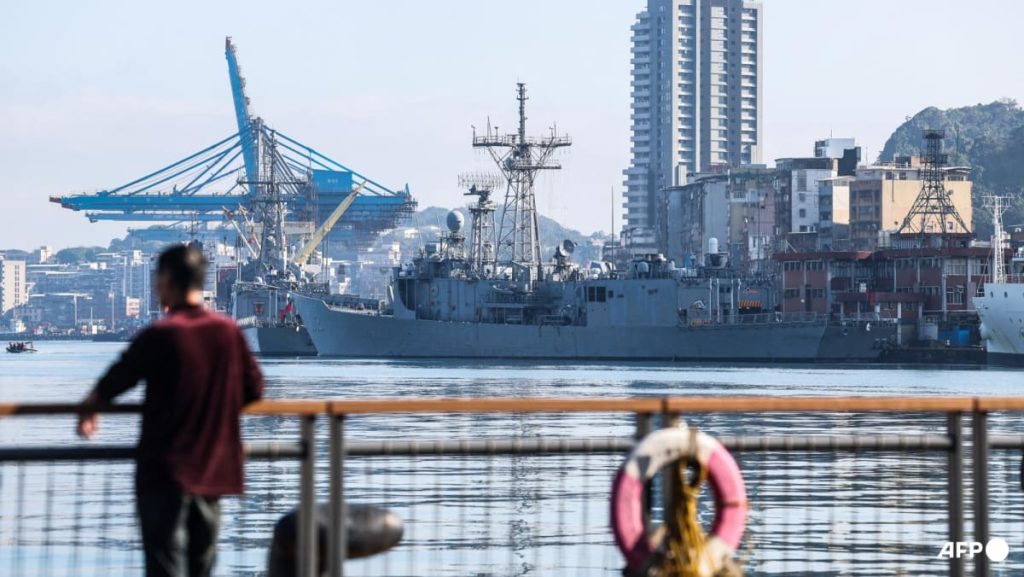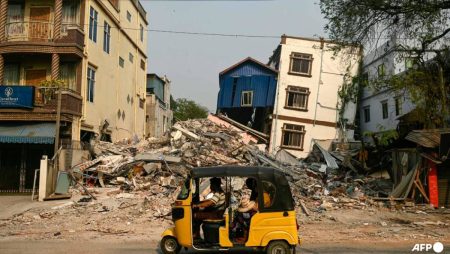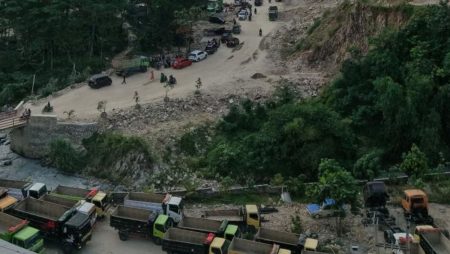This incident revolves around a suspected act of sabotage against a crucial subsea telecommunications cable located northeast of Taiwan. Taiwanese authorities are currently investigating a Hong Kong-owned cargo ship, raising concerns about potential grey-zone harassment tactics employed by China. The incident underscores the vulnerability of Taiwan’s communication infrastructure and the escalating tensions between Taiwan and China.
On Friday, January 6th, Taiwan’s Chunghwa Telecom reported damage to a subsea cable, prompting the Taiwanese Coast Guard to intercept a Cameroon-flagged cargo vessel. The vessel, owned by a Hong Kong individual and crewed by seven Chinese nationals, was suspected of being involved in the cable damage. Authorities ordered the ship to return to Keelung port in northern Taiwan for a thorough inspection. However, adverse weather conditions, specifically rough seas, prevented the coast guard personnel from boarding the vessel. Furthermore, the extended time lapse since the initial incident meant that the legal grounds for detaining the ship had expired. Consequently, the vessel was permitted to continue its voyage to Busan port in South Korea.
The investigation into the incident is ongoing, with Taiwanese authorities collaborating with their South Korean counterparts to gather further evidence. The cargo ship’s dual registration, sailing under both the Cameroon and Tanzanian flags with two distinct automatic identification system (AIS) signals, adds another layer of complexity to the investigation. This practice, often associated with vessels seeking to obscure their true identity or activities, raises suspicions about the ship’s intentions. While the precise motive remains unclear, Taiwanese authorities haven’t ruled out the possibility of deliberate grey-zone harassment, a tactic employed to disrupt and destabilize without resorting to outright military aggression.
The incident highlights the growing concern over China’s increasing assertiveness towards Taiwan. China considers Taiwan a breakaway province and has repeatedly vowed to bring the self-governing island under its control, by force if necessary. In recent years, Beijing has intensified its military activities around Taiwan, including frequent incursions by its air force into Taiwan’s air defense identification zone. These actions, coupled with escalating rhetoric, have heightened fears of a potential invasion. Disrupting communication links is considered a potential precursor to an invasion, aiming to isolate Taiwan from the international community and hinder its ability to coordinate a defense.
The damaged subsea cable is a vital component of Taiwan’s communication infrastructure, connecting the island to the global network. While Chunghwa Telecom was able to swiftly restore service by activating a backup mechanism, the incident underscores the vulnerability of these critical links and the potential for disruption. Taiwan’s reliance on undersea cables for communication makes it susceptible to such attacks, which could severely impact its economy, government operations, and overall societal functioning. The swift restoration of service demonstrates the importance of redundant systems in mitigating the impact of such incidents.
This incident adds to the growing list of concerns regarding China’s use of grey-zone tactics against Taiwan. These tactics, which fall short of open warfare, aim to wear down Taiwan’s defenses, erode its morale, and create a sense of vulnerability. Grey-zone activities can range from cyberattacks and disinformation campaigns to economic coercion and paramilitary operations. The suspected involvement of a Hong Kong-owned vessel further complicates the situation, given the ongoing erosion of Hong Kong’s autonomy under Chinese rule. This incident raises the question of whether the ship’s actions were directed by the Chinese government or undertaken independently.
The ongoing investigation holds significant implications for the future of cross-strait relations. If evidence emerges confirming deliberate sabotage, it could further escalate tensions between Taiwan and China and prompt international condemnation. The incident also underscores the need for increased vigilance and investment in protecting critical infrastructure from potential attacks. Taiwan will likely seek to strengthen its cybersecurity defenses, diversify its communication networks, and enhance cooperation with international partners to deter further acts of aggression. The incident serves as a stark reminder of the precarious security situation in the Taiwan Strait and the importance of maintaining a stable and peaceful regional environment.










